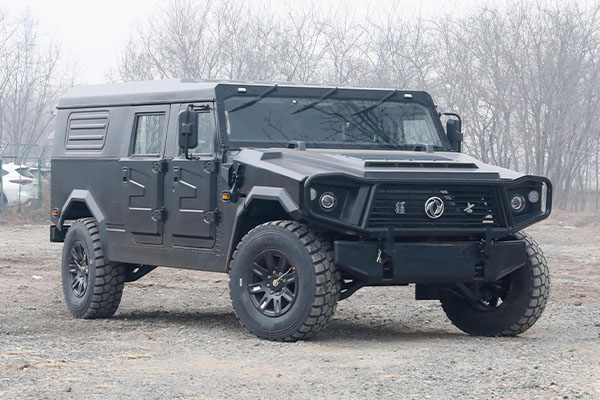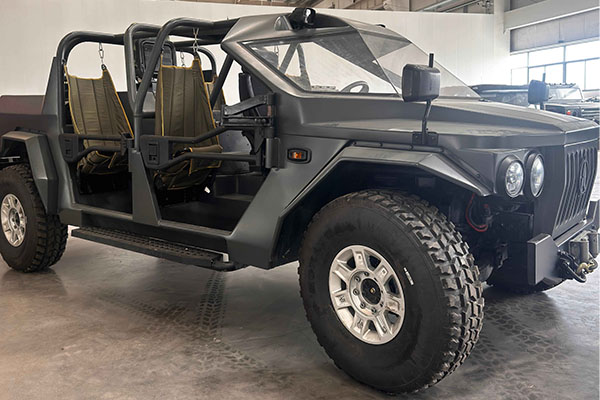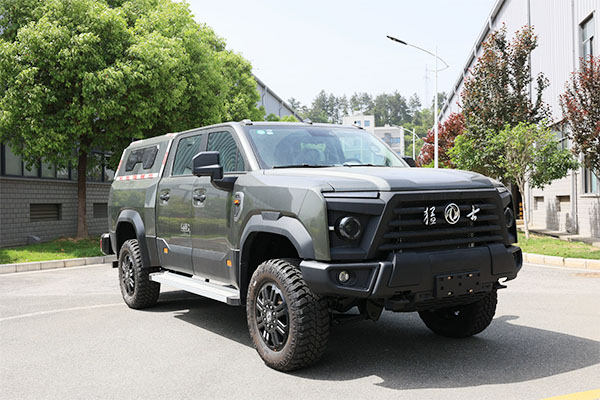How can an all-terrain high-performance off-road vehicle achieve efficient four-wheel drive system switching?
Release Time : 2025-02-07
All-terrain high-performance off-road vehicles are known for their excellent off-road capabilities and stability under various complex road conditions, among which efficient four-wheel drive system switching is the key to achieving these performances. This article will explore how all-terrain high-performance off-road vehicles can achieve efficient switching of four-wheel drive systems.
Four-wheel drive systems are mainly divided into three types: part-time four-wheel drive, full-time four-wheel drive and timely four-wheel drive. They have their own characteristics, but their common goal is to flexibly adjust the driving force distribution according to road conditions and driving needs to ensure the best driving performance and safety.
For a part-time four-wheel drive system, the driver needs to manually switch the four-wheel drive mode. When driving on good roads, the two-wheel drive mode is usually used to save fuel; in off-road conditions, such as muddy roads, sand or steep slopes, the driver needs to stop the vehicle and put it in neutral, and then manually switch to the four-wheel drive mode to enhance traction and stability. This manual switching requires the driver to have certain driving skills and road condition judgment ability.
The full-time four-wheel drive system does not need to be switched manually. It always maintains four-wheel drive and automatically distributes power through devices such as the central differential. This system can provide stable traction and controllability when dealing with various road conditions, but the fuel consumption is relatively high.
The timely four-wheel drive system combines the advantages of the first two. It can automatically switch between two-wheel drive and four-wheel drive modes according to road conditions. In some extreme off-road situations, the driver can also manually lock the four-wheel drive mode through a button or knob. The timely four-wheel drive system has the characteristics of simple structure and good fuel economy, while providing the necessary off-road performance.
In order to achieve efficient four-wheel drive system switching, the all-terrain high-performance off-road vehicle is also equipped with an advanced electronic control system. The system monitors the vehicle's driving status in real time through sensors, including vehicle speed, steering angle, wheel slip, etc., and then automatically adjusts the working mode of the four-wheel drive system based on this information. For example, when the system detects wheel slip, it will quickly switch to four-wheel drive mode to enhance traction and help the vehicle get out of trouble.
In addition, some high-performance off-road vehicles are also equipped with devices such as differential locks to further enhance off-road performance. In extreme road conditions, the driver can manually lock the differential lock to form a rigid connection between the front and rear axles or the left and right wheels, thereby improving the vehicle's ability to pass.
In summary, the all-terrain high-performance off-road vehicle achieves efficient and flexible four-wheel drive switching through advanced four-wheel drive system design and electronic control systems, providing drivers with excellent performance and safety in various complex road conditions.
Four-wheel drive systems are mainly divided into three types: part-time four-wheel drive, full-time four-wheel drive and timely four-wheel drive. They have their own characteristics, but their common goal is to flexibly adjust the driving force distribution according to road conditions and driving needs to ensure the best driving performance and safety.
For a part-time four-wheel drive system, the driver needs to manually switch the four-wheel drive mode. When driving on good roads, the two-wheel drive mode is usually used to save fuel; in off-road conditions, such as muddy roads, sand or steep slopes, the driver needs to stop the vehicle and put it in neutral, and then manually switch to the four-wheel drive mode to enhance traction and stability. This manual switching requires the driver to have certain driving skills and road condition judgment ability.
The full-time four-wheel drive system does not need to be switched manually. It always maintains four-wheel drive and automatically distributes power through devices such as the central differential. This system can provide stable traction and controllability when dealing with various road conditions, but the fuel consumption is relatively high.
The timely four-wheel drive system combines the advantages of the first two. It can automatically switch between two-wheel drive and four-wheel drive modes according to road conditions. In some extreme off-road situations, the driver can also manually lock the four-wheel drive mode through a button or knob. The timely four-wheel drive system has the characteristics of simple structure and good fuel economy, while providing the necessary off-road performance.
In order to achieve efficient four-wheel drive system switching, the all-terrain high-performance off-road vehicle is also equipped with an advanced electronic control system. The system monitors the vehicle's driving status in real time through sensors, including vehicle speed, steering angle, wheel slip, etc., and then automatically adjusts the working mode of the four-wheel drive system based on this information. For example, when the system detects wheel slip, it will quickly switch to four-wheel drive mode to enhance traction and help the vehicle get out of trouble.
In addition, some high-performance off-road vehicles are also equipped with devices such as differential locks to further enhance off-road performance. In extreme road conditions, the driver can manually lock the differential lock to form a rigid connection between the front and rear axles or the left and right wheels, thereby improving the vehicle's ability to pass.
In summary, the all-terrain high-performance off-road vehicle achieves efficient and flexible four-wheel drive switching through advanced four-wheel drive system design and electronic control systems, providing drivers with excellent performance and safety in various complex road conditions.







